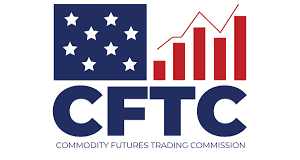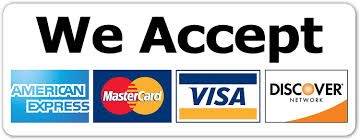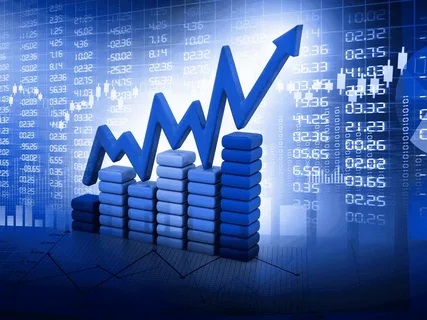
Trading and Margins are famous terms in the marketplace, but for a beginner to the scene, it can be quite helpful to gain a better understanding. So, before we dive into the question of what does trading on margin mean, let’s go back to the basics.
What does margin mean?
The term margin is a synonym for the word trading range. A margin is the difference between the purchase price and the selling price of a product. If you buy a product for 10 USD and resell it for 50 USD, you have earned a margin of 40 USD for the item. However, the following applies: Margin is not the same as profit. Because only by selling goods no profit can be determined since ultimately many other fixed costs in a company reduce the profit.
Margin basics
It is customary to traditionally express trading margins as a percentage. With intelligent accounting software, different margins can be carefully calculated. The cost price of a product is the purchase price to which surcharges or discounts have been added. This also includes burdens such as transport costs and customs duties. To simplify the calculation, the purchase price is often used as the basis for the calculation. The calculation is based on net amounts. The end customer price results as soon as the price includes VAT is added. The amount of a margin depends heavily on the industry. It is determined by various factors, such as the competitive situation, customers’ price sensitivity, and the level of production costs.
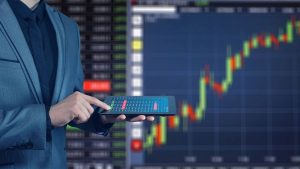
The margin must not only cover the purchase price but also be available for all remaining expenses. In companies, different margins are traditionally determined in order to meet the different requirements of the market. If the purchase price of a product is higher than its selling price, this constitutes dumping. Companies try to keep their margins as large as possible. If the final price is largely unchangeable due to a tough competitive situation, the margin can only be increased by a lower purchase price. Alternatively, falling margins can be offset by savings in other areas, such as salaries and energy costs.
The profit margin that develops for goods or services as a consequence of the discrepancy between the production cost or acquisition and the sale price is known as the “margin.” Hence, it is the sum that the selling business keeps as a markup.
The margin is not the same as the profit, it rather represents the contribution margin. This amount is thus used to cover all costs associated with the business. Be it, for example, costs for employees or a proportion of the office space. The margin is therefore clearly distinguishable from the profit since the profit is only calculated after deducting the costs. Thus, the margin might serve as the foundation for a rough estimation of profit.
It’s also worth noting that different industries have different understandings of margins, such as financial interest rates.
Margin and Profit
A corresponding margin is the basis for every company to be able to generate profit at all. Only through appropriate surcharges is it possible to cover your own costs and also achieve a surplus.
A distinction is made between the following types of margins:
Gross margin
The gross margin indicates what percentage of sales is left over after deducting the manufacturing costs from the sales price. The gross margin can vary accordingly depending on the industry. Software companies that have no real production costs can de facto make no calculations here, while production-intensive companies have high manufacturing costs.
Net margin
The net margin is already more meaningful than the gross margin, because not only the manufacturing costs are taken into account here, but all costs of the company. Thus, the net margin indicates what percentage of sales is left after all costs have been covered.
Operating margin
In the case of the operating margin, the company’s earnings are set in relation to sales. It would also be possible to conduct this estimate for a single item or fraction. This demonstrates the relative earning potential of the subject matter or product in question.
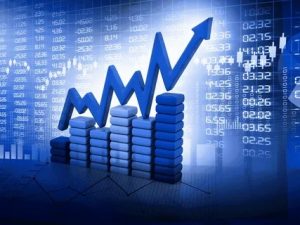
Profit margins by industry
Different industries, different margins! The amount of the margin can be extremely different depending on the industry. Within the respective industries, on the other hand, there is usually a hard fight to optimize margins and thus be one step ahead of the competition in terms of profitability.
Margin in finance
In the financial sector, the term “margin” occurs in different facets. For shares, for example, the margin indicates the difference between the issue price and the purchase price or current price. For loans, the margin is the markup that the bank charges customers. It procures the capital more cheaply and passes on the loans with a correspondingly additionally calculated margin.
Margin in trade and manufacturing
The margins in retail are very different. There are products on which large department stores only have a few percent margins, especially when there is a lot of competition and the goods are easily interchangeable. It is often calculated that retailers double the purchase price, this is often referred to as the “margin “. Much greater margins that are in the range of the numerous purchase cost are feasible in certain areas, particularly with luxury items.
Margin in gastronomy
The margins in gastronomy sound high at first. As a general rule, the sales price for food should be set at three times the cost of the goods. However, given that is a sizable sum, it is crucial to take into account what expenses this margin must cover.
The margins on drinks, which are usually more profitable than food, are attractive. This applies in particular to alcohol, for example when a whole bottle of wine is ordered.
How is the margin calculated?
Basically, it can be said that the margin always compares the existing costs with the actual sales price. The margin always indicates the relationship between costs and profit.
A simple example can further illustrate this:
A furniture store sells a sofa for 500 USD net. The sofa was bought for 250 USD net. There is a difference of 250 USD net, from which the costs could be determined proportionately, for example for the working hours of the employees in the department in which the sofa was sold or the rent for the exhibition space for the sofa, have to be deducted. This reduces the amount to 100 USD, for example, which ultimately corresponds to the net margin.
In this simplified example, the calculation proves to be easy, but it is advisable to use software or an online margin calculator for more complex cost structures.
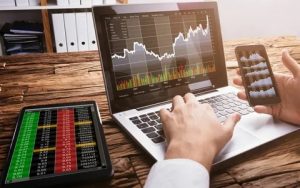
Increase margins by reducing costs
If the margins have to be increased in order to increase one’s own profit, the prices for the customers do not automatically have to be increased. Instead, businesses can carefully examine their expenses and identify areas for reductions.
Apart from a price increase, reducing costs offers a quick way to increase your own profitability and also increase the margin. Here, every percentage point counts, because after all, many small cost factors are included in the calculation of the margin. In addition to personnel costs, administration costs can usually also be reduced and fixed costs should also be checked regularly – such as contracts with mobile phone providers, insurance companies, and rental contracts for business premises. Here it is important that you as an entrepreneur keep an eye on the costs and regularly negotiate or change providers in order to be able to achieve the highest possible margins.
Are negative margins possible?
Negative margins can be justified, despite how bizarre it may sound. There are different scenarios for this. Traditional retail lure offers are the first option. A very cheap price is heavily advertised to lure potential customers into the store. There it is hoped that they will also acquire other products that show correspondingly positive margins. Ideally, the margin must always be calculated for the average shopping basket and viewed as a whole.
Another option is for manufacturing companies. When orders are bad, it can still be better to manufacture products that sell at slightly negative margins than to stop production altogether. Because when production stops, the fixed costs for machines continue and nothing is sold at all, so existing customers may jump off completely.
It is obvious that negative margins cannot be utilized long-term. So, they can only ever be temporary and you have to plan very carefully to what extent this procedure is affordable.
Profit calculation
The terms “profit”, “margin” and “trading range” are often mixed up and not clearly defined. To put it simply, it can be summarized that the trading margin indicates the surcharge that a retailer adds to the purchase price of the products. The margin, on the other hand, indicates – depending on the calculation method – how much of this trading range remains after deducting the costs that can be allocated. The profit remains if other costs are deducted that cannot be clearly assigned but are also incurred by the company.
It can thus be said that there is a subtle difference between the terms, even if they are mostly used as synonyms.
Determine the selling price using the margin
The procedure need not necessarily start with a sales price that is subsequently used to compute the margin. Reversing the process is another option. Thus, a retailer can purchase a good and say, for example, that he wishes to attain a 150% margin. He calculates the selling price by adding the required margin to the purchasing price. He must, of course, be practical and constantly keep a watchful eye on rival items.
Important!
A margin should be well chosen. If it is set too high, the product or service is no longer competitive on the market. However, if the margin is set too low. It could turn out in the income statement that the product has not been profitable so far and has already made huge losses.
High margin products
High margins are possible in a variety of different contexts. A classic example is all those products where the focus is often on marketing and the story surrounding the product. This is often the case with coffee, for example, where many providers rely on high prices and invest these in order to make shopping online an experience through intensive marketing.
Another example is apartments in sought-after locations. In times of the real estate boom, the construction costs also rise in line with the high workload of the construction companies, but the sales prices achieved are often very profitable.
Some gastronomical fields also have high margins. Delivered food is trendy and often comes with attractive margins since many products have low purchase prices and someone who wants to order quickly online does not pay close attention to every dollar.
Margin trading; trading financial products with leverage
When you “buy with margin” or engage in margin trading, you borrow funds from your brokerage firm and use them to purchase stocks. Simply stated, you borrow the money, use it to purchase stocks, and then pay off the loan — usually with interest at a later time.
When compared to paying cash, buying on margin has a lot of attraction, but it’s crucial to realize that there is a bigger risk involved. Investors employ margin trading, a type of leverage, to increase their returns. However, losses may also be increased if the investment doesn’t turn out as expected.
Very popular on the Forex market, Margin Trading consists of buying financial assets by mobilizing only a fraction of the capital usually required.
To adjust his level of risk and his potential gain, a Trader manages the size of his positions with precision on a daily basis. On a classic account, the size of transactions remains limited to the money deposited in the account, which can sometimes be frustrating when the asset on which the investor enters a position change little. On a margin trading account, on the other hand, it is possible to trade financial products with a greater degree of freedom since the size of the positions can this time exceed (under certain conditions) the sums of money deposited in his account.
Margin trading basics
In practice, the investor must open a margin trading account in order to perform leveraged trades. He can then open positions whose amounts exceed the sums deposited and immobilized in his Margin Trading account.
The investor and the broker make an agreement before opening the Margin Trading account to fix the specifics. The amounts of the initial margin, the minimum margin, or the maintenance margin are then defined to limit the risk of default by the investor as much as possible. The loan granted by the broker is accompanied in addition to commissions and conditions to be respected.
The key concepts of margin trading
Here are some key concepts of Margin trading that are bound to help you out in the long run.
The initial margin
The initial margin is the percentage of the purchase price of the assets that the Trader must have in order to open a position.
In the event that a trader wishes to buy 100 shares listed at $150 per share, the total cost of this operation is $15,000. Considering a required initial margin of 50%, the investor can therefore carry out this operation if he deposits half of this sum, ie $7,500. He then uses a leverage effect of 2 to 1 which can double his losses or his gains.
In the case of CFDs, the initial margins can reach margin levels of 5%, or leverage of 20. The Trader can thus open a position worth $10,000 with only $500.
The maintenance margin
Maintenance Margin is the minimum amount of capital that must be present in a Margin Trading account at all times in order for positions not to be closed (another position) falls below the minimum maintenance level, the investor is the victim of a margin call, the famous “margin call”. The investor is then summoned to make a deposit of funds or to resell part of the assets he holds in his account. Failing this, the broker may on its own initiative liquidate the investor’s open position in order to restore its maintenance margin.
The benefits of margin trading
Margin trading allows you to adapt your risk-taking to market volatility. Thanks to the leverage effect, the Trader can indeed exploit price variations that would have little interest if they were exploited with spot positions. The fluctuations of the Forex market are the perfect illustration of this. In this market, daily fluctuations are generally relatively small. The use of leverage, therefore, makes them more significant
Finally, if the leverage effect makes it possible to multiply one’s earnings by increasing the size of one’s positions, it can also be used to limit the sums of money immobilized in a trading account as much as possible. Thanks to the leverage effect, rather than tying up all the sums necessary to open a cash position, the Trader only uses a fraction of it. He is then free to invest the “liberated” money in other profitable investments.
Disadvantages of margin trading
Despite the multiple advantages of Margin Trading, there is a price to pay for Traders using this type of investment. Indeed, the increase in potential return is necessarily accompanied by an increase in risk-taking. If the gains can be multiplied, the losses can be multiplied too, and in certain market scenarios, it is even possible for the Trader to register losses greater than the maintenance margins immobilized on his account. It is therefore better to use leverage with the utmost caution and adopt rigorous and precise risk management rules
Beyond the increased risk, leveraged products also come with slightly higher commissions than products purchased with cash. If the latter is perfectly suited to scalping or Day Trading, they, therefore, respond poorly to the challenges of long-term investment.
Conclusion
For entrepreneurs, the margins are probably the most important thing to be successful. Just how your own actions and behaviors payoff is entirely up to you. That’s why it’s so important to have your own figures under control and to know which products and services achieve which margins. In this way, decisions can be made about the product portfolio and it shows what strengths and weaknesses the company has in terms of its own earning power.
Platinum Trading Solutions provides detailed trading guides for beginners and for all. You may also want to read more guides such as commodity trading or automated trading systems.
See Our – Why use an Automated Trading System ATS
See Our Limited Time “Promo Offer” and see how you can become our Client!








